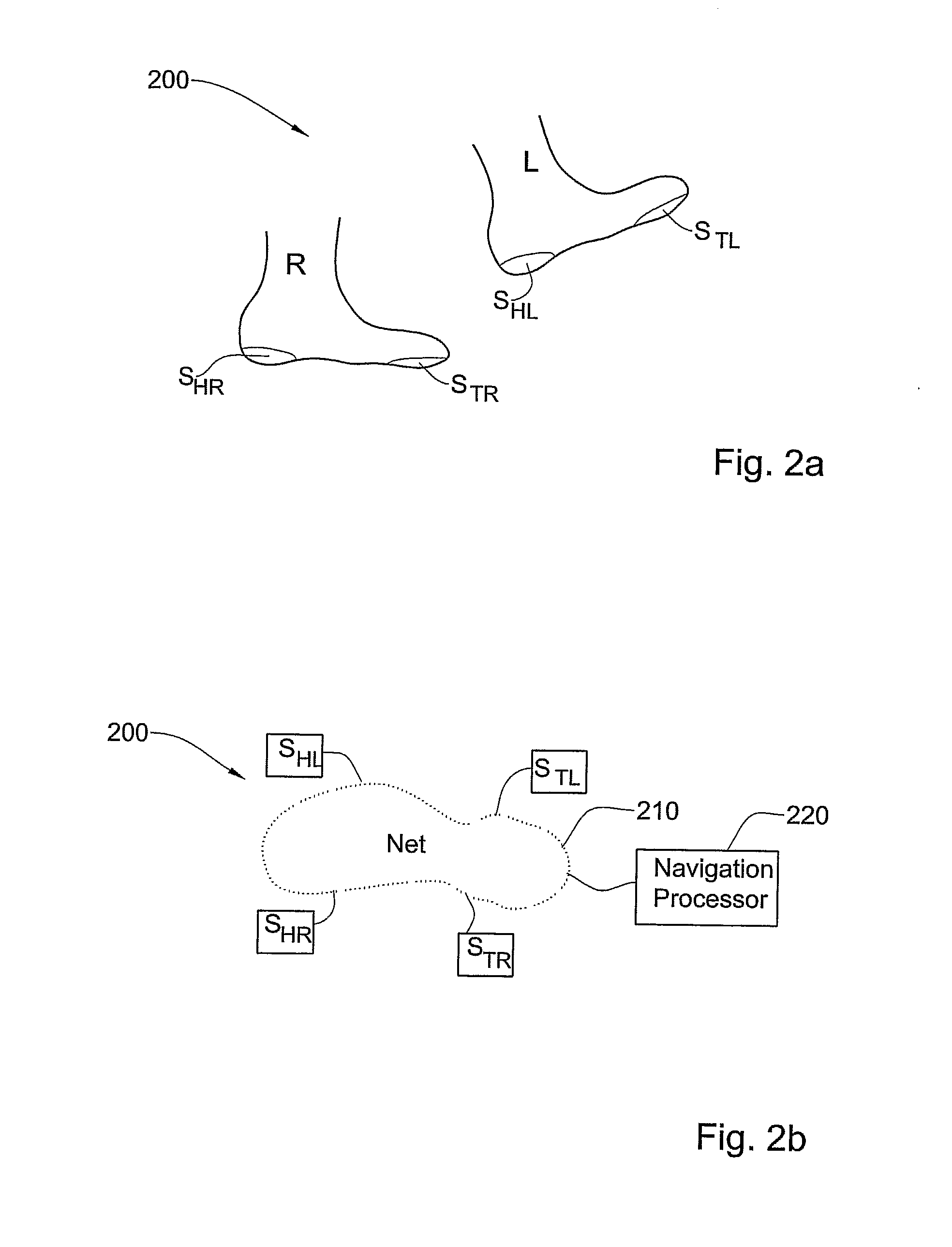Pedestrian navigation system and method
a technology for pedestrian navigation and navigation solutions, applied in navigation instruments, distance measurement, instruments, etc., can solve problems such as inability to guarantee the occurrence of such a condition, inability to provide exterior indications or signals, and errors accumulated, so as to reduce the accumulation of inertial drift errors and increase the accuracy of said corrected navigation solutions.
- Summary
- Abstract
- Description
- Claims
- Application Information
AI Technical Summary
Benefits of technology
Problems solved by technology
Method used
Image
Examples
Embodiment Construction
[0051]In accordance with a first aspect of the present invention there is provided a substantially autonomous on-foot dead-reckoning system and method utilizing, inter-alia, a sensor unit that comprises at least three or four sensors disposed on different locations on feet of a pedestrian, e.g. two sensors on the right foot and one or two sensors on the left foot. The sensors allow assessing the relative displacement of one foot with respect to the other. The resultant relative displacement data is considered and used in generating and transmitting a propagating signal (e.g. acoustic, infra-red, RF or other electromagnetic signal) from a transmitter / receiver associated with one sensor toward at least two a transmitter / receivers associated with other sensors, respectively. TOA information regarding receipt of the propagating signal by the at least two other transmitter / receivers is used in dead-reckoning navigation processing.
[0052]Thus, according to an embodiment of the invention th...
PUM
 Login to View More
Login to View More Abstract
Description
Claims
Application Information
 Login to View More
Login to View More - R&D
- Intellectual Property
- Life Sciences
- Materials
- Tech Scout
- Unparalleled Data Quality
- Higher Quality Content
- 60% Fewer Hallucinations
Browse by: Latest US Patents, China's latest patents, Technical Efficacy Thesaurus, Application Domain, Technology Topic, Popular Technical Reports.
© 2025 PatSnap. All rights reserved.Legal|Privacy policy|Modern Slavery Act Transparency Statement|Sitemap|About US| Contact US: help@patsnap.com



